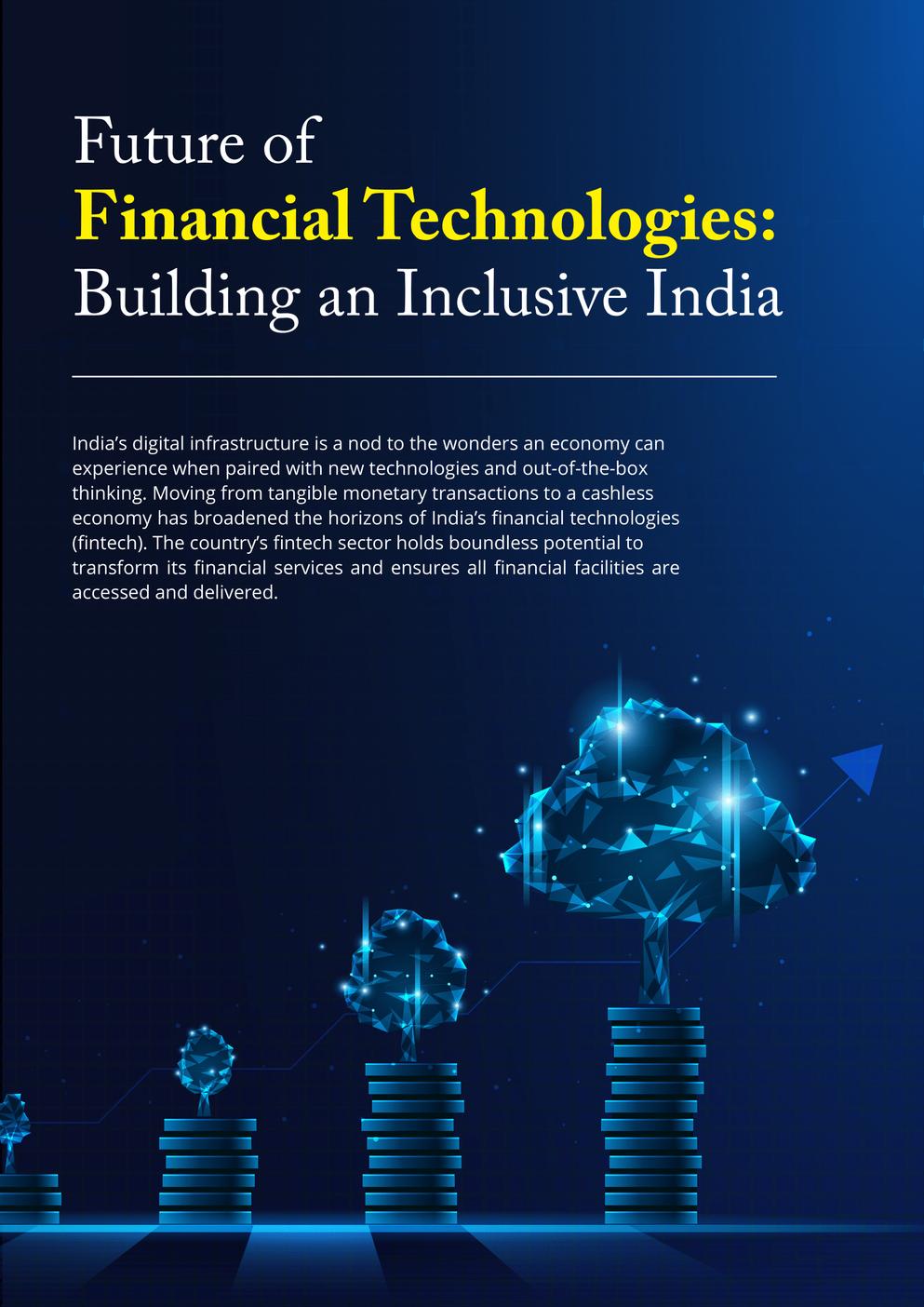




























Editor-In- Chief
Swati Gupta
Chief Strategist
Mohit Agarwal
Head of Content
Suhas Vittal
Content Editors
Suhas Vittal, Pankhuri Singh
Business Head
Avni Agarwal
Produc t Manager
Pankhuri Singh
Contributing Writers
Swati Gupta, Suhas Vittal, Pankhuri Singh
Head of Technology
Aakashdeep Yadav
Head of Design
Dimple Bhardwaj
Head of Digital Marketing

Princy Bhardwaj
Head of Technical Research & Content
Priyanka Gautam
Creative Co - coordinator
Umesh Tiwari
Produc t Marketing and Development Manager
Ajay Singh
Direc tor of Talent and Communication Manager
Ruchika Sharma
Newsstand Consultant
Priyanka Gautam
Web Developer
Alok Bhade
Video Produc tion Manager
Bhawesh Mishra
CEO
Swati Gupta
With unwavering pride, we unveil this exclusive edition of CXO Techbot on India's 77th Independence Day. This stands as a tribute to the exceptional advancements that have propelled our nation to new horizons. In the pages of this Independence Edition, we illuminate India as a definitive emblem of progress, growth, and pioneering innovation.
The infusion of technology into our daily lives has ushered in a new era, reshaping industries, and fundamentally transforming the way we exist. From agriculture to healthcare, education to transportation, India's embrace of innovation and cutting-edge technologies has been the driving force behind its remarkable advancement.
We delve into the stories of individuals, organizations, and institutions at the forefront of India's technological revolution. Our exploration extends to how artificial intelligence, data analytics, robotics, and the Internet of Things have revolutionized sectors, amplified efficiency and enriching countless lives.

This edition stands as a testament to the resolute spirit and steadfast determination of India—a force that has propelled us ahead for more than seven decades. As we revel in our independence, we envision an India that emerges as a global leader in innovation, with a strong emphasis on sustainable growth and societal well-being.
Swati Gupta CEO & Editor-In-Chief
As we envision the panorama of 2047, India emerges as a domain of prosperity and evolution, where the enduring tenets of sustainability and social responsibility stand as the very essence of our voyage.













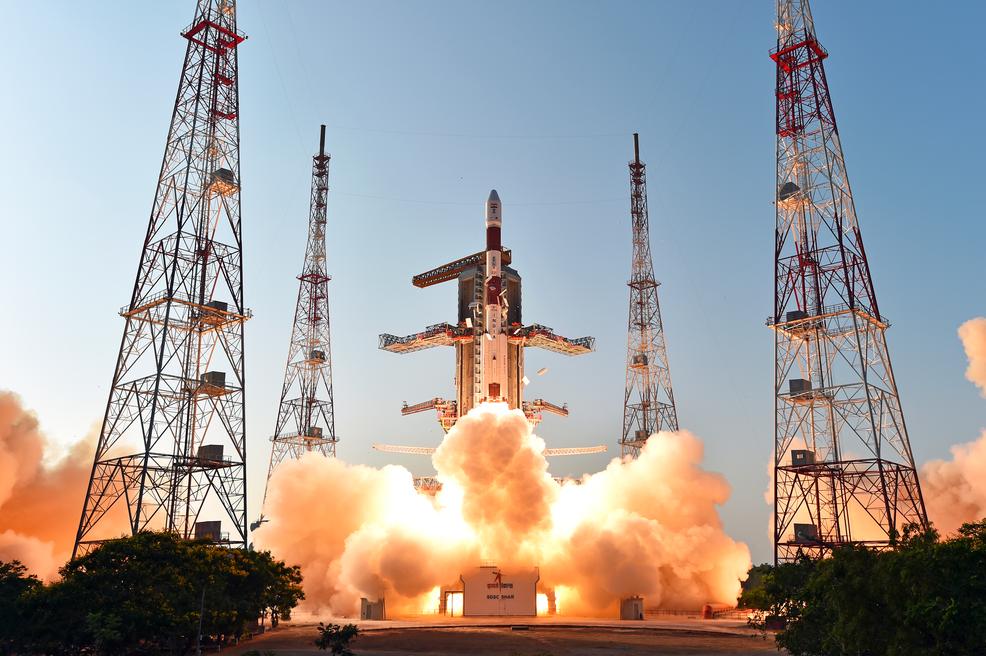


How Agri-tech is Mitigating Climate Change Impact on Agriculture







In a bold stride towards unraveling the mysteries hidden beneath the waves, India is gearing up for an audacious voyage known as the Samudrayaan project. This groundbreaking initiative is poised to plunge three intrepid explorers to unfathomable depths of 6000 meters within a submersible vessel.

Announced by Kiren Rijiju, the Union Minister of Earth Sciences, the Samudrayaan project stands as India's maiden foray into the realm of manned ocean missions. Nestled within the expansive tapestry of the Deep Ocean Mission, this visionary undertaking resonates with India's commitment to nurturing the Blue Economy. This overarching policy envisions the harmonious harnessing of oceanic resources to power economic growth, livelihood enhancement, and environmental stewardship.

Anticipation runs high as the Samudrayaan project, steered by the National Institute of Ocean Technology (NIOT) in Chennai, takes shape. The heart of this mission beats within 'MATSYA 6000,' the formidable submersible vessel designed to endure 12 hours of regular operations and a staggering 96 hours during emergencies.
www.CXOTechBOT.com

Through the Samudrayaan project, scientists will grasp the enigmatic facets of uncharted marine domains, unfurling secrets that have eluded humanity for eons.
In the mosaic of 'New India,' where visions are ambitious and aspirations boundless, the Samudrayaan project occupies a coveted slot. As the curtains draw closer to the mission's realization in 2026, India stands on the brink of joining the elite club of nations equipped with the prowess to explore the undersea realm.
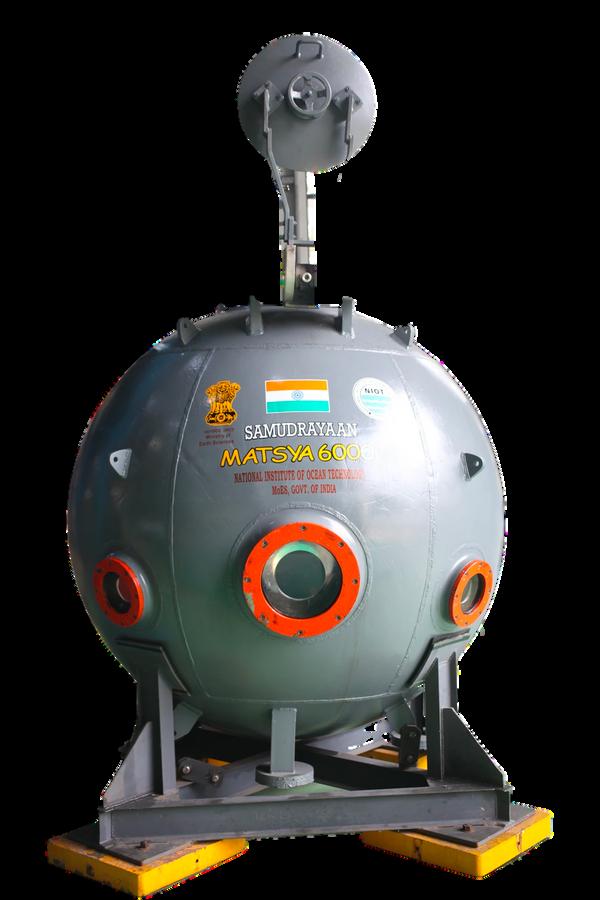
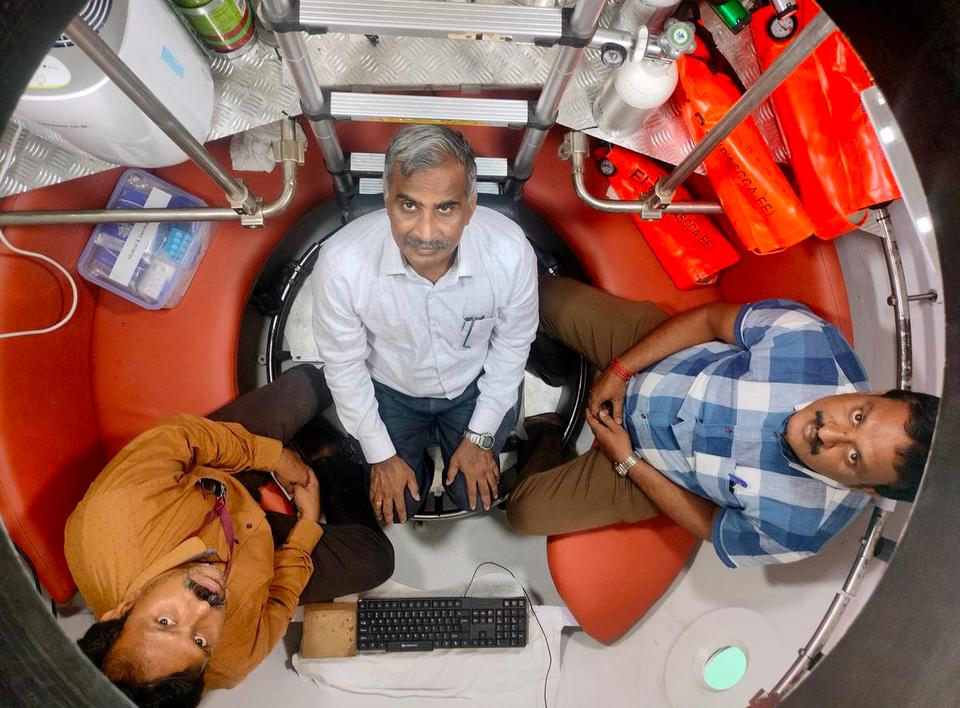
Butthisisn't justadiveinto theabyss— it'saplunge intotheheart ofknowledge itself.


 The price tag of this audacious odyssey, including the Deep Ocean Mission, is pegged at a formidable Rs. 4,077 crores, slated for distribution over a five-year span. A strategic investment in the future, this initiative propels India to stand shoulder to shoulder with stalwarts in subsea exploration—the United States, Russia, France, Japan, and China.
The price tag of this audacious odyssey, including the Deep Ocean Mission, is pegged at a formidable Rs. 4,077 crores, slated for distribution over a five-year span. A strategic investment in the future, this initiative propels India to stand shoulder to shoulder with stalwarts in subsea exploration—the United States, Russia, France, Japan, and China.
AsIndia's explorersgearup tounlockthe ocean 'senigma,the Samudrayaan projectisnotjust anexpedition;it'sa testamentto humaningenuity andourceaseless yearningto decipherthe universe'smost arcanecodes hiddenbeneaththe waves.

Since breaking free from colonial rule in 1947, India has embarked on an extraordinary voyage of technological breakthroughs. From humble beginnings to asserting its dominance in the digital age, India's relentless pursuit of progress has been truly aweinspiring This article delves into the captivating and consequential evolution of technology within India's borders over the past 77 years.
Brace yourself for an exploration of the profound impact technology has wielded across diverse sectors of society, shaping the nation's destiny and catapulting it onto the global stage as an emblem of remarkable transformation.
12 August 2023
In the early years of independence, India placed utmost importance on laying a robust technological groundwork. This endeavour involved the establishment of prestigious educational institutions such as the Indian Institutes of Technology (IITs) and the Indian Space Research Organisation (ISRO). These pivotal milestones served as the breeding ground for a talented pool of engineers, scientists, and researchers who became the driving force behind India's technological advancements.

In addition to these advancements, the establishment of the Indian Council of Medical Research (ICMR) in 1949 and the setting up of pharmaceutical companies like Indian Drugs and Pharmaceuticals Limited (IDPL) in the 1960s laid the foundation for India's growth as a major player in the global pharmaceutical industry.

Together, these institutions acted as catalysts, propelling India’s journey towards becoming a formidable technological powerhouse, including the transformative Green Revolution that revolutionized agricultural practices and ensuredfoodsecurityforthenation.
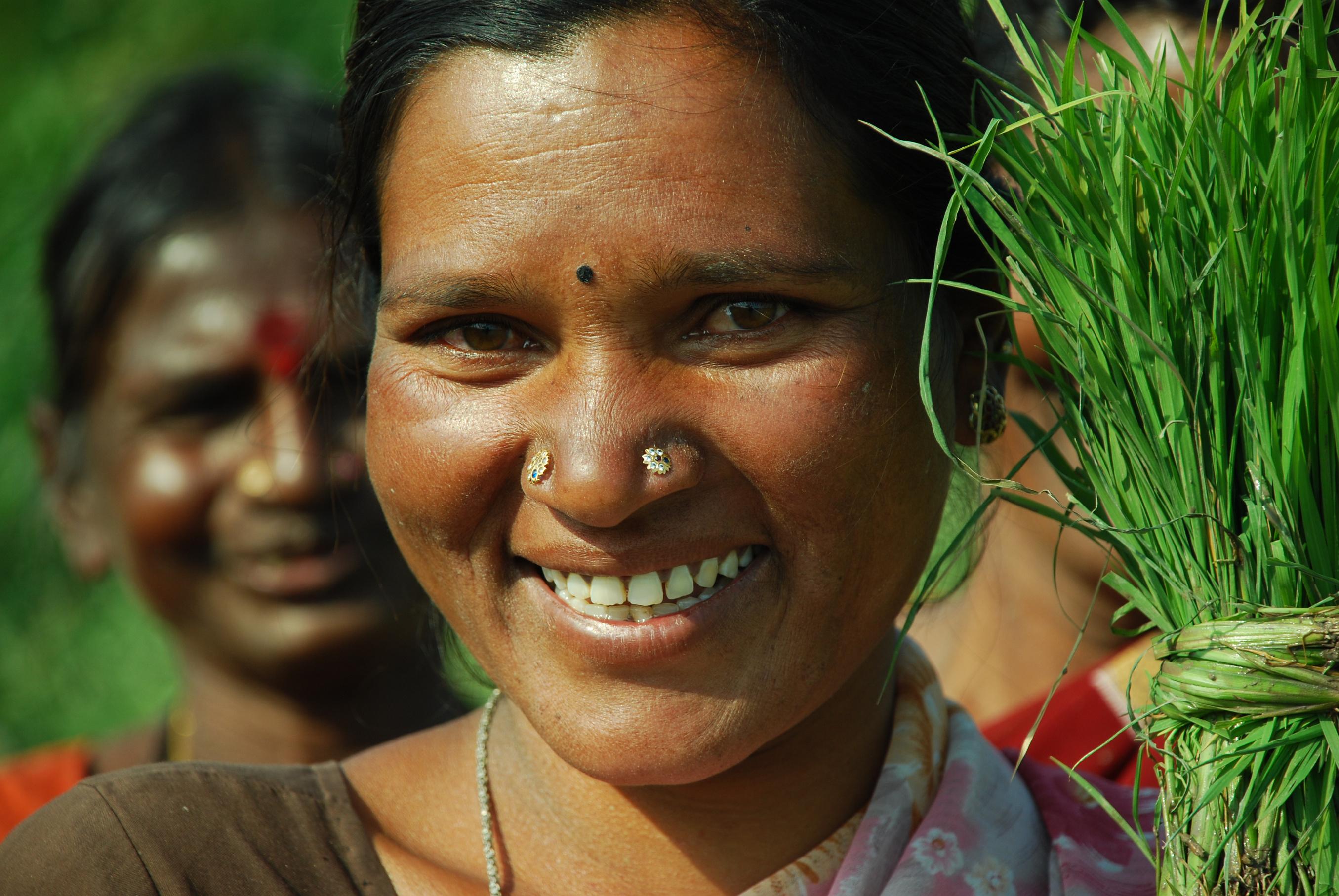
During this transformative period, the IITs, renowned for their excellence, produced exceptional talent, while ISRO spearheaded the nation's ambitious space exploration projects, including the historic Pokhran1nuclear tests also known as Operation Happy Krishna in 1974.
India experienced a telecommunications revolution as the Public Switched Telephone Network (PSTN) ushered in a new era of connectivity nationwide. The introduction of PSTN enabled an expansion of telephone services, empowering individuals across the country. In 1984, Bharat Sanchar Nigam Limited (BSNL), a state-owned telecommunications company, emerged to provide affordable communication services to the masses, further democratizing access.


The 1990s witnessed the dawn of the Internet era in India, as the National Informatics Centre's (NIC) network, ERNET, seamlessly connected educational and research institutions. Additionally, the liberalization of the economy in 1991 welcomed private players, fostering competition and spurring technological advancements in the telecommunications landscape.
During this period, India's biotechnology sector also witnessed significant growth, with the establishment of the Department of Biotechnology (DBT) in 1986. The country made strides in biotech research and development, leading to advancements in agriculture, healthcare, and the development of indigenous vaccines and medicines.
14 August 2023
The onset of the new millennium also witnessed a transformative change in communication as mobile phones became prevalent. Mobile service providers such as Airtel, Vodafone, and Idea Cellular significantly revolutionized connectivity by making mobile services affordable and accessible to the masses. This mobile revolution bridged the digital divide, empowering people with easy access to information, communication, and financial services.
Mobile phones became an essential tool for connectivity, enabling individuals across India to participate in the digital world and reap the benefits of technological advancements.

During this period, India's defense technology continued to progress significantly. In 1998, India conducted the landmark Pokhran 2 nuclear tests, reaffirming its capabilities in the defense sector. The successful tests demonstrated India's commitment to national security and its self-reliance in defense technology.
India's biotechnology and pharmaceutical sectors also flourished during this period. The country emerged as a major global player in the generic drug market, providing affordable medicines to people worldwide. Additionally, advancements in biotechnology contributed to improved agricultural practices, such as the development of genetically modified crops and crop protection technologies.
The launch of the Digital India campaign in 2015 marked a significant milestone in India's technological journey. The initiative aimed to transform India into a digitally empowered society and knowledge economy. It focused on digital infrastructure development, digital literacy, and the provision of government services through digital platforms.
Under the Digital India program, initiatives such as Aadhaar, a unique biometric identification system, and the Unified Payments Interface (UPI), a real-time payment system, have transformed the way Indians access services and conduct financial transactions.

India's defense technology has made great strides in recent years. The country has shown significant growth in indigenous defense manufacturing and has been actively developing and acquiring advanced defense systems, including modernizing its armed forces with state-of-the-art equipment and technologies.
E-governance platforms like the Goods and Services Tax Network (GSTN) and the National eGovernance Plan (NeGP) have streamlined administrative processes and improved service delivery.

In addition to these remarkable achievements, India made history once again with the successful launches of Chandrayaan 2 in 2019 and Chandrayaan 3 in 2023, showcasing its expertise in space exploration and scientific achievements. India's defense technology has made great strides in recent years.
India's agricultural sector has continued to grow and innovate. The country has also made strides in precision agriculture, adopting digital technologies to optimize crop yields, conserve resources, and promote sustainable farming practices.
India has experienced a remarkable surge in technological innovations in recent years, fueled by a thriving start-up ecosystem. Pioneering breakthroughs in artificial intelligence (AI), machine learning, fintech, and e-commerce have emerged from this vibrant landscape.
Leading companies like Flipkart, Paytm, Ola, and Zomato have successfully disrupted traditional industries, bringing about transformative changes in the way business is conducted across the nation.
These dynamic ventures have redefined market dynamics, demonstrating India's prowess as a hub for cutting-edge technologies and highlighting the country's ability to embrace and drive innovation in diverse sectors.
India's ambitious vision of constructing smart cities and augmenting digital connectivity has gained significant momentum. Key initiatives, such as the Smart Cities Mission, are focused on developing sustainable and technologically advanced urban hubs. Simultaneously, the expansion of broadband connectivity, facilitated by the BharatNet project, has played a pivotal role in connecting rural regions, enabling access to essential digital services and empowering communities.
In conclusion, India's technological journey since independence has been nothing short of awe-inspiring. From humble beginnings to the digital revolution of today, technology has profoundly reshaped every facet of Indian society. As the nation propels forward, it stands at the precipice of embracing cutting-edge technologies and harnessing its immense talent pool to pave the way for a future where India emerges as an unrivalled global technological force, leaving an enduring legacy in the chronicles of history.
India'stechnologicaltriumphsisataleofdisruption andtransformation,wherethewindsofinnovation havepropelledthenationtotheforefrontofthe digitalrevolution.
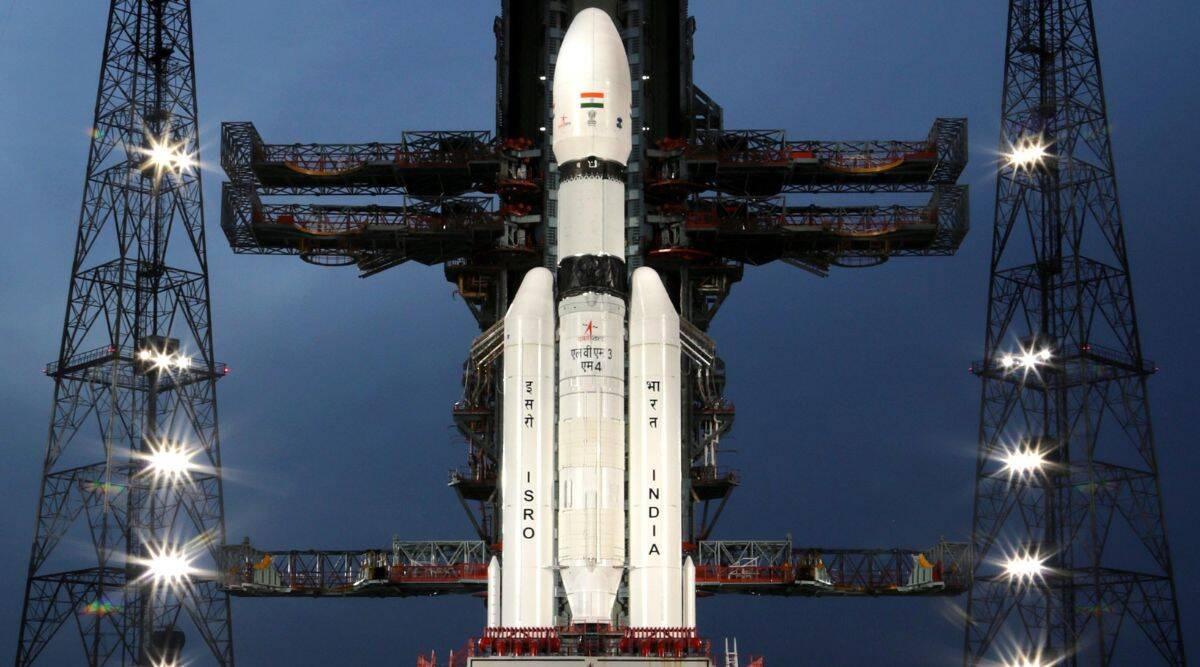



-Prime Minister, Narendra Modi ith a vibrant democracy and relentless economic growth, India has stepped into the spotlight, assuming the esteemed G20 Presidency with a transformative vision
WGuided by the resonant theme, 'One Earth, One Family, One Future,' this nation of diversity stands steadfast in its mission to shape a collective global destiny.
India's leadership injects fresh optimism into the G20 forum championing the LiFE movement - a compelling call to embrace an environmentally-conscious way of life Rooted in a developmentoriented ethos, India aspires to establish a rules-based order fostering peace and prosperity for all nations

At the core of this monumental endeavor lies the essence of "Vasudhaiva Kutumbakam" (the world is a family) inspired by the Sanskrit scripture Maha Upanishad. This profound belief underscores our shared existence as part of one global family, advocating for the preservation of life's delicate balance - from microorganisms to majestic creatures - all harmoniously coexisting on our shared home, planet Earth

With over 200 meticulously planned events, this summit marks the culmination of a year-long series of meetings, with prospective host cities encompassing a diverse range including New Delhi, Bengaluru, Chandigarh, Chennai, Guwahati, Indore, Jodhpur, Khajuraho, Kolkata, Lucknow, Mumbai, Pune, Rann of Kutch, Surat, Thiruvananthapuram, and Udaipur.
In the quest for a unified future, India sets forth on a monumental 25-year odyssey known as "Amritkaal". Extending from its 75th Independence anniversary to its centenary, this journey signifies India's unwavering commitment to pioneer sustainable growth and unyielding resilience

"India'sG20Presidencywillworkto promotethisuniversalsenseofoneness.Henceourtheme-'OneEarth, OneFamily,OneFuture"



India's unwavering commitment to combating climate change takes center stage, driving a journey of green development. Through a heightened focus on climate finance and technology, India propels equitable energy transitions in developing nations The introduction of the LiFE movement, deeply rooted in India's sustainable traditions, sparks a global wave of eco-conscious practices, merging heritage and innovation
Guided by a vision of inclusive, swift, and resilient growth, India surges forward Anchored in structural transformation, the nation supports small and medium enterprises navigating complex global trade dynamics.
Prioritizing labor rights, welfare, and bridging the global skills gap underscores India's dedication to uplift all.

Rekindling its commitment to the 2030 Sustainable Development Goals, India confronts post-COVID challenges with unwavering resolve Focused on achieving SDGs, India showcases unity's potency and determined resilience.


As a crucible of innovation, India embraces technology with a human-centric approach. Elevated knowledge-sharing paves the path for digital public infrastructure, fostering inclusive progress across sectors like agriculture and education.

India's influence extends to multilateralism's reform Pioneering change, India envisions an international system embracing accountability, inclusivity, and representation - tailored to meet 21st-century challenges

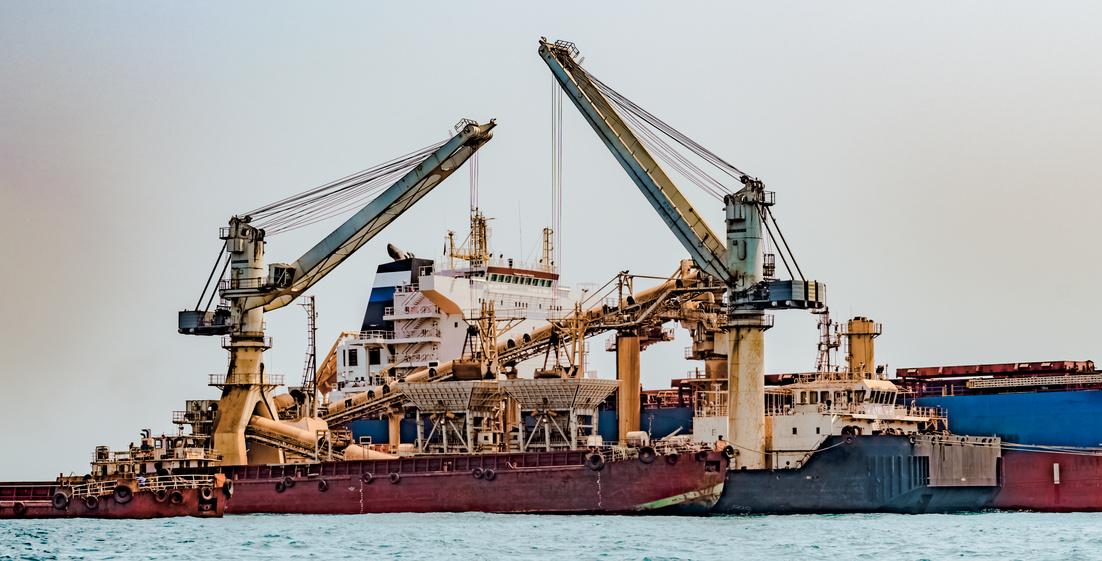
At India's core lies a strong commitment to women-led development.
Recognizing women's pivotal role in socio-economic progress, India champions empowerment and representation, fostering a world where potential thrives and Sustainable Development Goals are achieved
In conclusion, India's G20 Presidency stands as a testament to the potency of unity, igniting a wave of change that illuminates the world. As we gather under the banner of 'One Earth, One Family, One Future,' let us collaboratively script a new chapter brimming with hope, prosperity, and a shared destiny for generations to come


In the epoch of brisk technological advancements, Artificial Intelligence (AI) has surfaced as a transformative powerhouse with the potential to mold the future of humanity.

Beyond its commercial applications and substantial economic boons, AI is progressively being harnessed for societal benefit, addressing some of the most daunting challenges faced by societies globally.
From healthcare and education to environmental conservation and disaster management, AI is validating its potency as an instrumental catalyst in crafting a more equitable, sustainable, and compassionate world.
In the realm of healthcare,AI is revolutionizing the way diseases are diagnosed, treated, and managed AIpowered diagnostic instruments, driven by intricate machine learning algorithms, can scrutinize vast amounts of medical data to detect patterns and predict diseases at a nascent stage. This proactive detection facilitates timely interventions and ameliorated patient outcomes. Moreover, AI is metamorphosing medical imaging analysis, rendering radiology and pathology more precise and efficient.

AI is also turbocharging drug discovery and development. By simulating molecular interactions and analyzing genetic data, AI algorithms can pinpoint potential drug candidates with expeditious speed, diminishing the time and cost involved in bringing new medications to the market. This harbors the promise of finding cures for diseases that have persistently confounded medical researchers.

AI's impact on education is equally profound. Intelligent tutoring systems can adapt and personalize lessons based on individual learning needs and preferences, providing students with customized educational experiences. AI-powered chatbots serve as virtual teaching assistants, addressing queries and providing real-time assistance to learners, fostering a more interactive and engaging learning environment.
Furthermore, AI analytics can dissect student data to identify learning patterns and challenges, enabling educators to devise targeted interventions and support systems. This data-centric approach enhances educational outcomes and helps bridge the educational divide between learners of diverse backgrounds and abilities.


AI's predictive and analytical prowess has proven invaluable in disaster management and humanitarian relief undertakings AI algorithms can assess historical data and real-time information to predict natural disasters and gauge their potential impact This early warning mechanism enables authorities to take proactive measures, ensuring the safety of communities in disaster-prone regions.

AI-empowered robots and drones are deployed in hazardous terrains during disasters, assisting with search and rescue operations and mitigating the risk to human lives. The ability to swiftly process voluminous data allows humanitarian organizations to allocate resources efficiently and deliver aid to affected communities in a timely manner


AI is a formidable ally in global environmental conservation and sustainability efforts. AI-driven systems can monitor wildlife populations and habitats through data from sensors, cameras, and satellites, aiding in wildlife conservation and thwarting illegal poaching and deforestation
In the battle against climate change, AI's advanced climate models process vast amounts of climate data, assisting scientists and policymakers to understand climate patterns and devise strategies for mitigating the impact of global warming. AI-driven smart monitoring systems optimize resource usage in agriculture, reduce waste, and promote sustainable practices

Empowering humanitywith AIisnotabout replacingpeople butelevating theirpotentialto drivepositive changeforall

While AI's potential for societal good is immense, it also encompasses ethical considerations and potential risks. Ensuring data privacy, transparency, and fairness in AI algorithms is vital to maintain public trust and avoid biases or unintended negative consequences. Responsible AI deployment necessitates collaboration between governments, tech corporations, and civil society to establish ethical norms and guidelines.


AI for social good symbolizes a paradigm shift in technology's role in society. As AI continues to evolve, its beneficial impact on healthcare, education, disaster management, and environmental conservation becomes increasingly evident. By harnessing AI for social good, we can unlock the potential of technology to create a better world, one where access to high-quality healthcare, education, and environmental preservation are not privileges but fundamental human rights Embracing AI for social good goes beyond mere technological advancement; it is a moral imperative that empowers us to tackle global challenges and construct a more inclusive and sustainable future for generations to come

onsumerism has evolved over the past few decades. Consumer patterns shifted dynamically from quantityfirst to quality over quality to sustainability taking the top spot.
Since consumers have adopted a valuedriven approach to using services, organisations are keeping their needs at the forefront and looking at ways that meet their Environmental, Social, and Governance (ESG) goals.


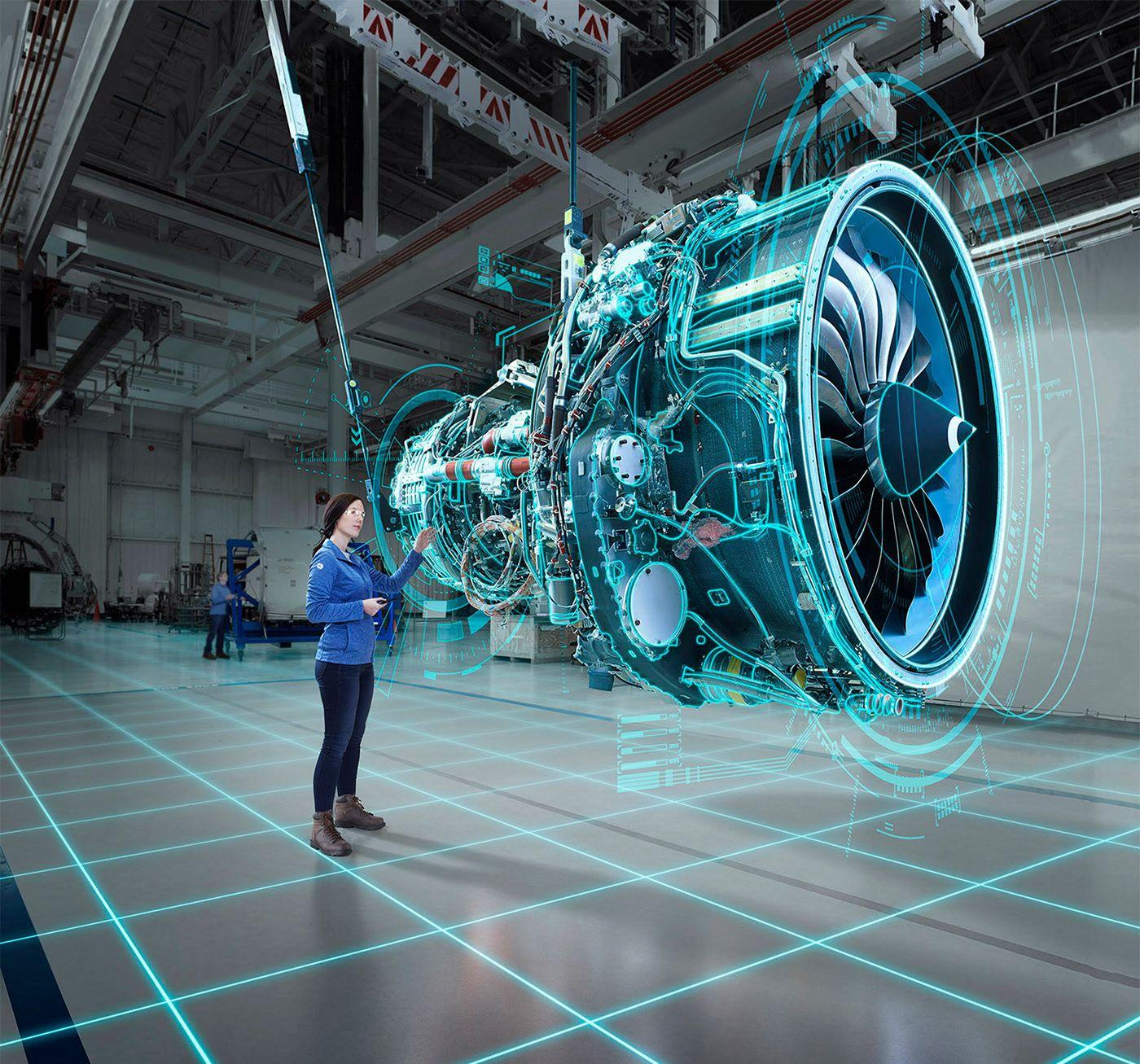

In 2022, Lockheed Martin and NV collaborated to develop an AI-sup twin of Earth, equipping the Nati and Atmospheric Administration centralised approach to assessin the current global environmenta as unpredictable and extreme we conditions. The two companies a thoroughly evaluate the sea surfa temperature, one of the variable pipelines, by September 2023.
According to Don Harris, NVIDIA' Manager of Accelerated Computi twins will help researchers solve most challenging scientific and e concerns. He said, "The combina Lockheed Martin's AI technology Omniverse will give NOAA resear powerful system to improve wea predictions at a global scale."
As industries adopt digital techno twins can help companies improv new business frameworks, produ processes to meet ESG goals. Com publicly incorporated sustainabil agendas. However, progress has prompting governments worldwi ambitious sustainability objective the concern to the top of every o list.

Per Kevin Macnish, Digital Ethics Manager at Sopra Steria, digital t already demonstrated their pote emissions.
30 August 2023
He says digital twin technology can create a sustainable environment across various applications, helping "reduce the greenhouse gas emissions and carbon footprint of buildings by up to 50%, with the potential to lower emissions across entire road networks "

Regarding sustainability, digital twins can significantly reach net-zero's goals by 2023 Nevertheless, to achieve this, digital twin technology should shoulder the work needed to meet those goals and be accepted by the people involved, such as those responsible for creating the objectives and those affected by them.

This requirement also stands true for the UK's National Digital Twin program, an initiative started by the British government in 2018 to bring change and help enterprises implement digital twin technology.

As governments align their strategies with the deadline to transition to netzero emissions, companies must keep up to ensure compliance with ESG goals
Dr Phani Bhushan Sistu, IoT Solutions Lead at Hitachi Vantara, says, "By harnessing the potential of digital twins, manufacturers can spotlight areas where resources are being used inefficiently and take appropriate corrective actions to meet their climate reporting and ESG commitments."
Sustainability lies at the heart of brands and businesses, and sustainability and productivity walk hand-in-hand. Creating a business model that includes both builds an allencompassing digital infrastructure, driving continuous growth.
The digital twin model treats sustainability as the goalpost than a byproduct, ensuring it becomes an integral part of the industrial infrastructure and meets all environmental, social, and governance objectives.

In a quest for a more advanced and transformed society, India has been driving towards sustainable and inclusive development. Conventional energy sources are comfortable, convenient, and familiar—they are also non-renewable, hazardous, and not environment-friendly. India’s focus is shifting from non-renewable energy to renewable, from carbonisation to decarbonisation, from conventional economic development to Green Hydrogen.
The need to steer away from fossil fuels is making headlines due to the urgency of the matter. As India moves forwards with economic development, industrialisation, modernisation, and international expansion, the risk of high carbon emissions and footprint is looming more than ever. Taking this concern into stride and treating it with the urgency it demands, India implemented the National Green Hydrogen Mission.

e Green Hydrogen initiative is the catalyst for India’s robust economic development, energy transition, decarbonisation, and meeting its net-zero goals.
India’s pledge to reach net zero emissions by 2070 and generate fifty percent of its electricity from renewable resources by 2030 laid the foundation for the Green Hydrogen initiative. This new model will revolutionise the Indian landscape by reshaping energy practices and predicting and eliminating environmental concerns, steering the country in a new eco-friendly direction.

e country is pioneering a new ecosystem that promotes sustainability and avoids carbon dependency. e Green Hydrogen mission gives a new impetus to India’s energy industry.
“
India is predicted to be the third-largest energy consumer by 2030. Therefore, it is crucial for the nation to tap into renewable energy reserves—this is where the Green Hydrogen mission takes centre stage. Green Hydrogen accelerates decarbonisation because it serves as a reliable fossil fuel substitute in various industries, from logistics to the power sector.
Green Hydrogen is created using renewable sources to electrolyse water by applying electric current to water and separating hydrogen and oxygen molecules. Since hydrogen is produced using renewable energy, such as wind and solar power, it serves as a stepping stone in India’s energy transition while reducing costs. Fossil fuels require high expenditure; Green Hydrogen does not.
Moreover, Green Hydrogen is the central figure in India’s decarbonisation mission and achieving carbon neutrality. Green Hydrogen in fertilisers, manufacturing sectors, production of steel, and heating operations can reduce approximately 50 MMT of annual greenhouse gas emissions.
Green Hydrogen has the potential to curb India’s sustainability challenges and strengthen energy conservation measures while accelerating economic development. India is a goldmine for renewable energy resources.
With 750 GW of solar power and 302 GW of wind power, India can break free from its dependency on imported non-renewable energy sources, reducing costs and boosting its energy security.
Additionally, using Green Hydrogen in remote and inaccessible areas of India can increase its demand and consumption, as it would replace petroleum and diesel.
In accordance with its Environmental, Social, and Governance (ESG) goals, Jindal Stainless became the first Indian steel company to establish a Green Hydrogen power plant. This power plant will help the company reduce carbon emissions by nearly 2700 MT annually, contributing to India’s net zero emissions target. The Green Hydrogen plant will also accelerate India’s transition from thermal to clean energy, developing the manufacturing sector.
India is a pioneer of safe and sustainable development, and the Green Hydrogen mission is pivotal in reshaping India into a carbon-neutral and decarbonised nation. This initiative would not make India self-reliant but also secure its position as a leading global exporter and increase energy security. The Green Hydrogen mission will revamp the country’s energy sector and contribute to its sustainable and economic growth.




India's march towards achieving the status of a developed nation has been characterized by substantial advancements across multiple sectors, with emergent technologies playing an indispensable part in this metamorphosis. The seamless fusion of innovative thought, rigorous research, and robust development has catapulted India into the echelon of cutting-edge technologies, constructing a sturdy groundwork for a future brimming with immense potential. The subsequent enumeration highlights some of the most impactful emerging technologies, shaping the landscape of a burgeoning, developed India:
India's tech sector continues to accelerate its economy by leveraging artificial intelligence (AI) and machine learning (ML). These transformative technologies have ushered in a business revolution, fueling revenue growth, amplifying productivity, and elevating user experiences. From automated financial investments and intelligent assistants to digital marketing strategies and interactive chatbots, their applications span a wide spectrum of industries.

This tech-driven evolution underscores India's position as a burgeoning hub of innovation, where AI and ML play pivotal roles in reshaping traditional paradigms and driving unparalleled progress.

Augmented Reality (AR) and Virtual Reality (VR) technologies have emerged as powerful tools for transforming India's future. From advertisement to transportation, these technologies have reshaped industries across the country. The leading ICT services providers introduced India's first 5Gpowered VR advertisement, revolutionizing consumer engagement with immersive experiences.
Companies have harnessed AR/VR to enhance product development processes, resulting in improved efficiency. By accelerating the design process and optimizing product materials, AR/VR technologies have saved valuable time and resources


The Internet of Things will connect people, devices, and infrastructure in a seamless network, transforming how India functions as a nation Smart cities will harness IoT to optimize energy consumption, enhance public transportation, and create sustainable urban environments

IoT-enabled agricultural systems will improve crop yields and resource management, ensuring food security for the nation. IoT in healthcare will enable remote monitoring and telemedicine, ensuring quality healthcare reaches even the most remote areas.
India has embraced blockchain technology, witnessing significant growth across various industries. The implementation of blockchain is expected to reach 46% by 2026, driving improvements in healthcare, cybersecurity, entertainment, transportation, and supply chain management
Blockchain-solution protected millions of mobile users from spam calls, demonstrating the technology's potential in telecom.

India's dynamic tech ecosystem fosters innovation, attracting aspiring innovators and creating a fertile ground for digital proliferation. The 'Startup India program launched in 2016 has paved the way for a thriving start-up culture in the country

These start-ups have leveraged AI, cloud-based software, and other cutting-edge technologies to bring about transformative changes in sectors like healthcare, education, and assistive technologies for the disabled.

AsIndia'seconomysoars,infrastructureimproves, healthcareachievesbreakthroughs,employmentrates rise,andeducationreacheseverycorner,thevoyageto anemergingfuturecontinueswithgreatpromise.
India is on the brink of a seismic shift with quantum computing, unlocking unparalleled computational might. Industries like finance, drug discovery, and cryptography are poised for radical transformation as quantum prowess tackles once-insurmountable challenges.
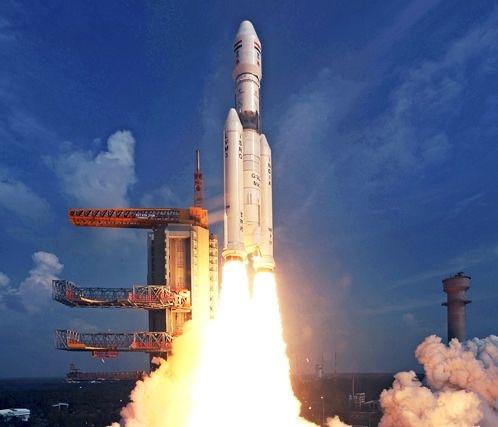
Beyond traditional computing's limits, this technology's impact resonates, propelling scientific research, catalyzing material science breakthroughs, and revolutionizing climate modeling.

As India boldly strides towards its ambitious vision of transforming into a developed nation, integrating these proliferating technologies is of paramount importance. The voyage to emerging technologies is a call for collaboration, innovation, and a shared commitment to building a better and brighter future for India.
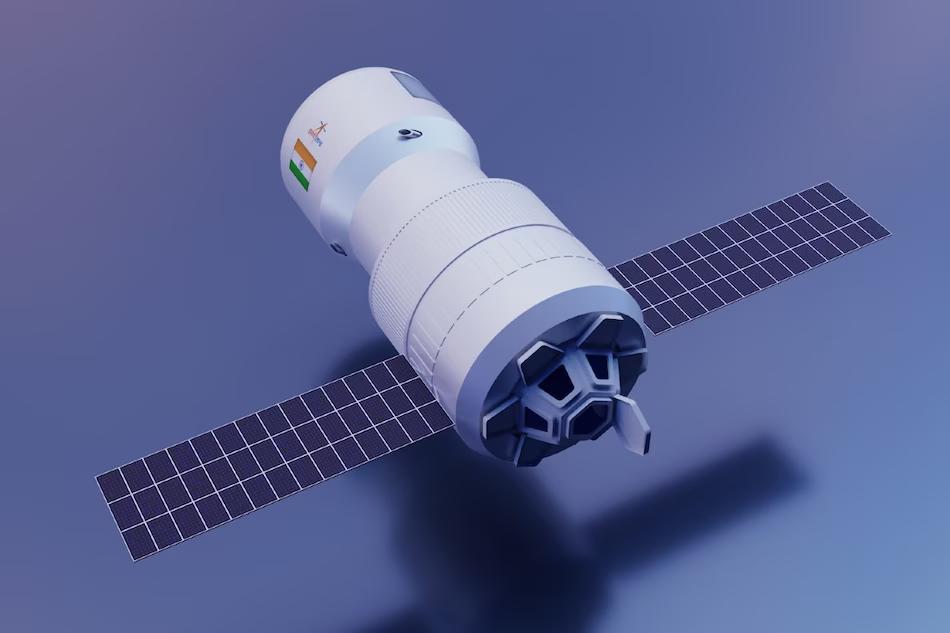

Theprinciplesof inclusivityand equitableaccessto technologyare indispensablein ensuringthatthe benefitsofthese groundbreaking innovations permeateall segmentsofsociety.


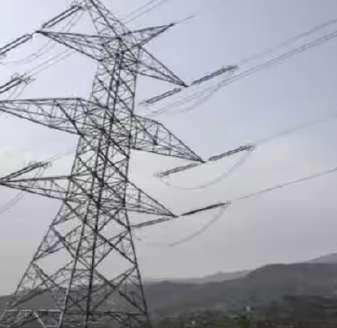




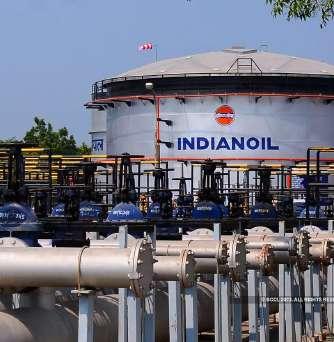

The concept of Maharatna PSUs was introduced by the Indian government to recognize and empower the most prominent public sector enterprises. These esteemed companies have been the backbone of India's industrial growth and have made significant contributions to the nation's economic development. The term "Maharatna" translates to "gem" or "jewel," and these companies indeed embody the essence of India's industrial growth and technological advancement.
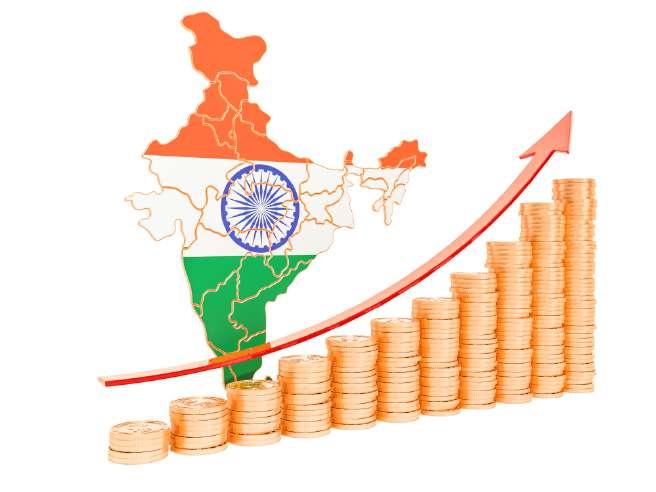

e Maharatna PSU companies have been the catalysts of change, shaping India's technological destiny and empowering its citizens.
In the wake of India embarking on a new adventure, Public Sector
Undertakings (PSUs) were the country’s beacon of self-reliance and a robust economic foundation.

With its cutting-edge technology, modern power equipment, and support to the country’s power generation and transmission sectors, BHEL’s technological expertise has been the driving force behind India’s thorough energy planning and unmatched energy security.
Bharat
BPCL’s role in India’s oil and gas sector is a testament to its technological prowess and understanding of energy needs and demands. By leveraging the advanced refining technologies, BPCL embraced the digital era and amplified operational efficiency.




Coal India Limited, or CIL, is one of the world’s largest coal producers and a research and development hub. CIL’s emphasis on R&D and adoption of modern mining technologies has empowered the energy sector and reformed the coal industry.
A pioneer in the natural gas sector, GAIL is the brain behind operating one of India’s largest natural gas pipeline networks. Furthermore, its ambitious endeavoursto facilitate sustainable developmenthave promoted clean energy and the implementation ofmodern gasbased technologies in India, revamping its energy landscape.
 Petroleum Corporation Limited (BPCL)
Petroleum Corporation Limited (BPCL)

A manufacturer and supplier of petroleum products, IOCL set the framework for deploying advanced refining strategies and technologies. By embracing digitalisation, the Indian Oil Corporation has created and delivered innovative and optimum solutions for seamless supply chain management and customer services.


NTPC Ltd’s state-of-the-art coal and gas technologies and renewable power projects have not only contributed towards the development of India’s energy sector and overall growth but have also been integral in creating efficient and innovative thermal power technologies by focusing on research and development.

ONGC is a trailblazer in exploring and producing oil and gas while investing time, skills, and resources in offshore drilling and exploration activities to accelerate technological advancements.


PFC’s financial and consultancy services ensured India’s power sector remains ahead of the curve. Its support has enabled power generation, transmission, and distribution industries to adopt advanced technologies for their development and progress.
Another key player in India’s technological reformation is POWERGRID. POWERGRID developed India’s power transmission network, ensuring stable, seamless, and efficient electricity distribution across the country.

RINL, operating under the brand name ‘Vizag Steel’, has been an auxiliary source for advancing India’s steel industry. By incorporating advanced technologies, RINL has produced high-quality steel products, making steel operations much more efficient, productive, and lucrative.


As the name suggests, SAIL has been instrumental in the successful sailing of India’s steel sector. In addition to uplifting the steel industry, SAIL’s leveraging of cutting-edge technologies to
produce a comprehensive catalogue of steel products contributed to India’s robust infrastructure development.


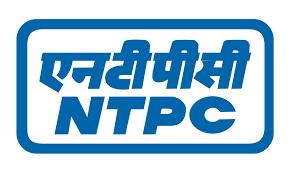
The National Thermal Power Corporation (NTPC) has been a critical player in unleashing the potential of India’s thermal power generation by embracing modern technologies to enable efficient and eco-friendly power production.

When it comes to elevating India’s oil and gas sector, Oil India Limited has made and continues to make significant contributions. OIL continues influencing India’s economic development by adopting advanced exploration technologies to strengthen the nation’s energy security.

The 13 Maharatna PSUs have been the torchbearers of India's technology revolution, catalyzing the nation's progress across diverse sectors. As India continues its journey towards becoming a global economic powerhouse, these Maharatna PSUs will undoubtedly remain at the forefront of shaping the nation's technological future.

With unyielding determination, India soars to new celestial heights, leaving an indelible mark on the world's space exploration tapestry.
Human exploration has been fueled by an insatiable desire to conquer new frontiers, pushing the boundaries of possibility.
In the domains of space and aviation, this ambition has yielded remarkable achievements, revolutionizing our cosmic connections and aerial navigation
India, renowned for its historical legacy and technological prowess, has surged ahead in space exploration and aviation, embarking on a transformative era of discovery and innovation.
From the wings that once bore our dreams to the rockets propelling our aspirations, India's journey unveils an enthralling chapter in the quest for knowledge and progress

In 1969, India's aerospace odyssey took flight with the inception of the Indian Space Research Organisation (ISRO). Over the years, ISRO has ascended to the pinnacle of space research and satellite technology worldwide. A remarkable milestone arrived in 2013 when India's Mars Orbiter Mission (Mangalyaan) triumphantly entered Martian orbit, making India the first Asian nation and the fourth space agency globally to achieve this feat
Mangalyaan's resounding success magnified India's technical brilliance and reinforced its unwavering dedication to space exploration. Through ISRO's endeavors, India continues to soar higher, pushing the frontiers of knowledge and innovation in the cosmos.
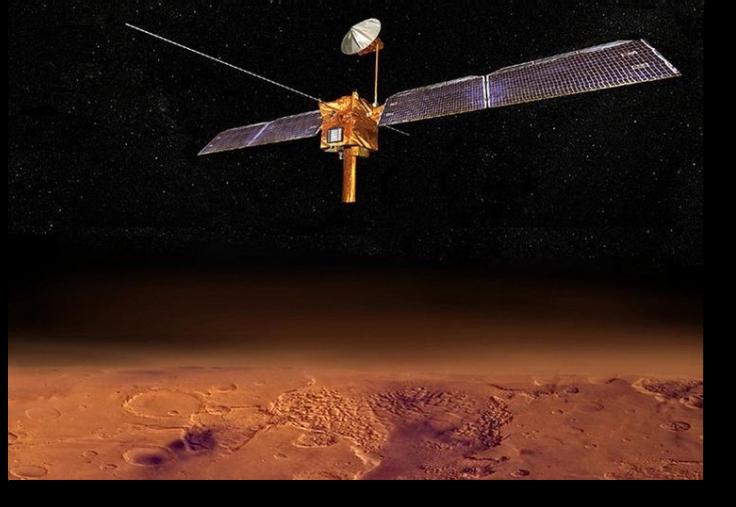

48 August 2023
The Chandrayaan missions, comprising Chandrayaan-1 in 2008 and Chandrayaan-2 in 2019, have bestowed invaluable insights into the Moon's geology, drawing India nearer to its vision of manned lunar expeditions.
A momentous milestone in India's lunar exploration journey, the successful launch of Chandrayaan-3 on July 14th, 2023, epitomizes the nation's unwavering commitment to pushing the frontiers of space science

Gaganyaan, India's maiden manned space mission, stands as a crowning achievement on the nation's ambitious space agenda Pioneering the journey of Indian astronauts into space, Gaganyaan symbolizes a momentous stride in India's space program, exemplifying not only technological prowess but also national pride and the indomitable spirit of human exploration.


India's aviation sector has witnessed remarkable progress, with notable advancements in indigenous technology
The success of the Light Combat Aircraft (LCA) Tejas and its naval variant, Tejas-N, exemplifies India's capability in designing and manufacturing advanced fighter jets
50 August 2023
Additionally, the ongoing development of the Multi-Role Transport Aircraft (MTA) and the Regional Transport Aircraft (RTA) signifies India's dedication to enhancing its aviation capabilities further. These strides highlight India's commitment to self-reliance and technological prowess, solidifying its position as a significant player in the global aviation landscape
Amid mounting environmental concerns, India is prioritizing sustainable aviation solutions. Spearheading the development of electric and hybrid aircraft and advocating the use of biofuels,
India is resolute in curbing the aviation industry's carbon footprint. This strategic endeavor aligns with India's mission to foster an eco-friendly aviation sector, actively contributing to global endeavors in combating climate change.
The synergy between space and aviation industries holds immense promise for India's future. Satellite-based communication, navigation, and weather forecasting have revolutionized aviation operations, ensuring safer and more efficient flights

Furthermore, the integration of satellite-based technologies in air traffic management is set to reduce congestion and enhance airspace capacity, benefitting both the industry and passengers
The fusion of space and aviation technologies not only enhances India's scientific and technological standing but also bolsters its economic growth and strategic capabilities.
Embracing sustainable practices, India seeks to strike a harmonious balance between technological progress and environmental preservation, exemplifying its commitment to a greener and more sustainable future for aviation.



In an age where technological advancement shapes industries at an unprecedented pace, the convergence of the "Make in India" initiative with the transformative force of Industry 4.0 carries the potential to propel India towards global manufacturing and technological eminence. This symbiosis not only resonates with India's pursuit of self-reliance and economic growth but also promises to redefine the trajectory of Indian industries in the digital era.
Launched in 2014, the "Make in India" initiative sounded a clarion call to transform India into a manufacturing powerhouse.

With a resolute aim to curtail import dependency, encourage innovation, and stimulate job creation across diverse sectors, the initiative set the stage for India's resurgence. Streamlining business procedures, attracting foreign investments, and nurturing indigenous capabilities formed the crux of this visionary endeavour.


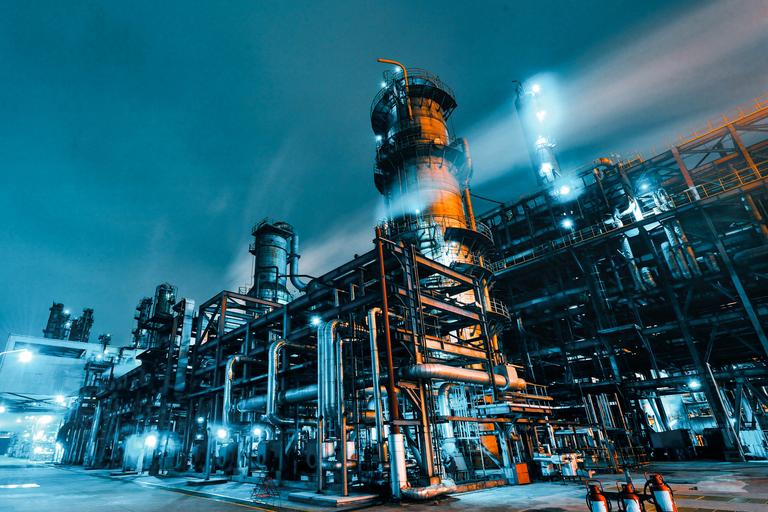
Simultaneously, Industry 4.0, often termed the Fourth Industrial Revolution, dawned as a catalyst for change. It introduced the integration of cyber-physical systems, IoT, AI, and data analytics into manufacturing, giving birth to smart factories. These factories exhibit the ability to communicate in real-time, self-optimize, and make adaptive decisions, constituting not just an evolution but an utter transformation of manufacturing paradigms.
The synergy between "Make in India" and Industry 4.0 transcends mere coincidence; it represents a harmonious convergence that offers reciprocal augmentation. Industry 4.0's technological arsenal, encompassing the likes of automation and data analytics, reinvigorates traditional manufacturing. In tandem, the "Make in India" initiative provides the canvas upon which Industry 4.0's potential can be tangibly realized.
The integration of Industry 4.0's capabilities triggers transformative shifts within manufacturing. Automation, AIdriven decision-making, and predictive maintenance synergize to streamline operations, elevate quality control, and optimize resource allocation. The resultant effect is minimized downtime, amplified production efficiency, and heightened competitiveness in India's manufacturing sector.
An integral facet of this convergence lies in the empowerment of small and mediumsized enterprises (SMEs). Typically constrained by limited access to advanced technologies, SMEs now harness the potential of Industry 4.0 to propel their growth. Nurtured by the nurturing ecosystem of the "Make in India" initiative, these enterprises flourish as incubators of innovation.
However, this transformative journey mandates an adept workforce. The amalgamation of "Make in India" with Industry 4.0 underscores the urgency of upskilling and reskilling programs. As India embraces Industry 4.0, it not only empowers its workforce but also nurtures a labour pool adept at managing the demands of the Fourth Industrial Revolution.

The conjunction of these forces projects India onto the global stage of innovation and manufacturing excellence. Industry 4.0 equips India to meet global demands, customize products, and adopt sustainable practices, enhancing India's stature as a trusted manufacturing partner worldwide.
However, this journey is not devoid of challenges. Overcoming obstacles such as digital infrastructure development, data security, and regulatory frameworks necessitates a unified approach. The alliance between the government, industry stakeholders, and academia becomes instrumental in surmounting these challenges.
The amalgamation of "Make in India" with Industry 4.0 signifies not just a tactical convergence but a visionary partnership. This fusion is poised to
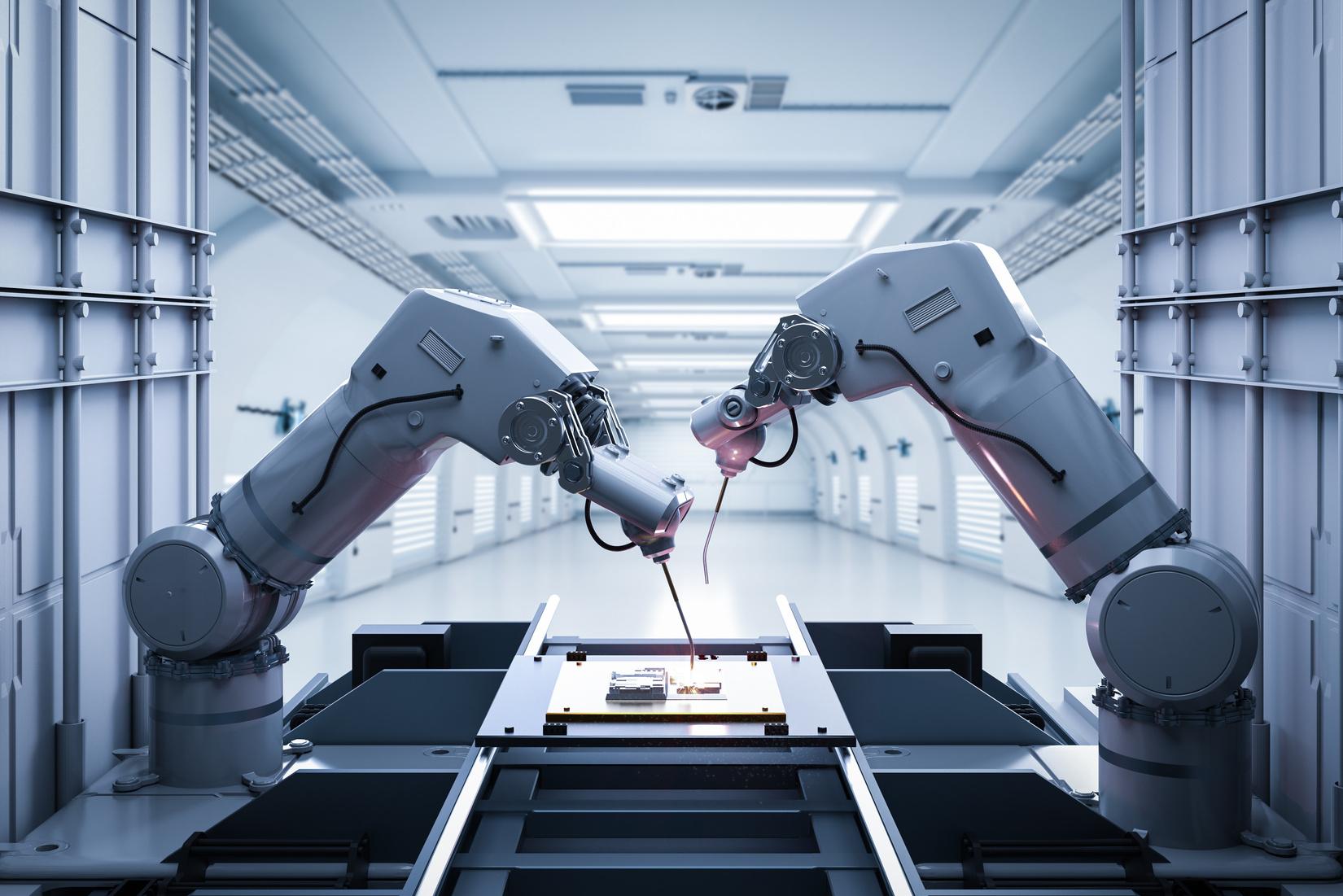






Responsible for catering to the country’s crop needs and supply and demand, agriculture is a viable asset to India’s GDP. However, climate change is an ever-looming threat to the sector, not only disrupting weather patterns, intensifying extreme weather events, and altering the natural balance of ecosystems but also putting a noticeable dent in the economy; extreme heat and humidity could put 4.5% of India’s GDP at risk by 2030. Understanding the gravity of the situation, India has embraced digitalisation and used agritech solutions to help Indian farmers weather the storms of climate change and build resilient and sustainable farming practices.
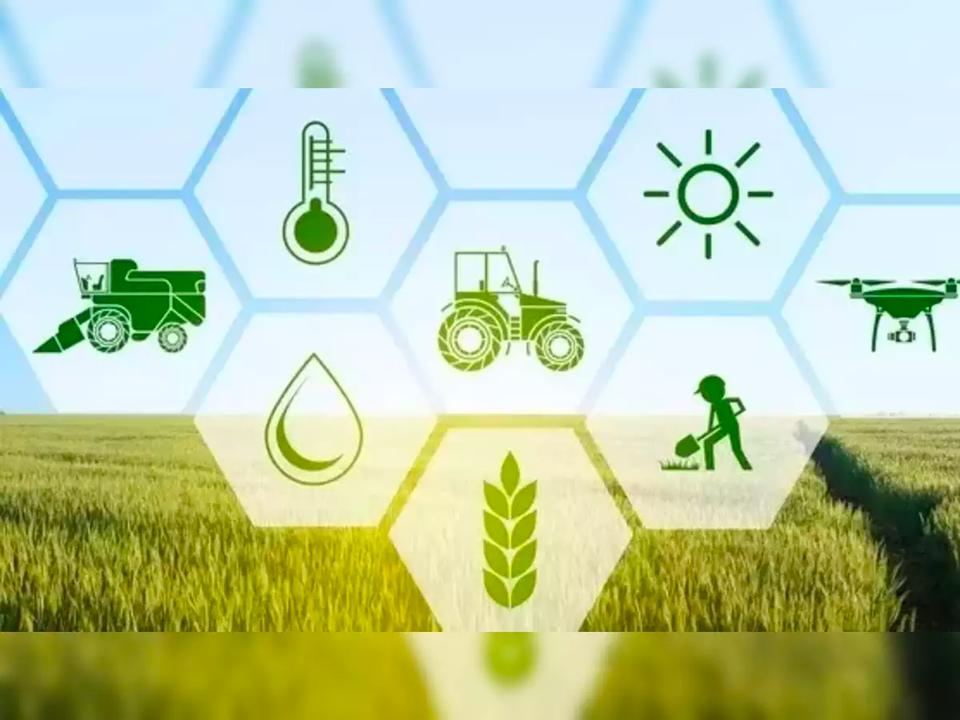

Astheclimateshifts,agritech'sinnovationrises, creatingasustainableandclimate-resilientfuture forIndianagriculture.
Agritech is a capable tool in mitigating climate change impact by improving weather forecasting and enhancing early warning systems. Advanced weather prediction models, combined with satellite data and IoT sensors, allow farmers to use real-time and accurate information about weather patterns and predict atmospheric changes.


Precision farming, a hallmark of agritech, enables farmers to make data-driven decisions and optimize the use of resources such as water, fertilizers, and pesticides. Through the deployment of sensors, drones, and satellite imagery, farmers can monitor their fields' health and identify areas that require attention. This targeted approach minimizes resource wastage and reduces the environmental footprint of agriculture
Agritech solutions like smart irrigation techniques, such as drip irrigation, rainwater harvesting, and soil moisture sensors, optimise water usage, prevent water waste, ensure crops receive adequate water at the right time, and solve the concern of water scarcity in many parts of India.

Agritech promotes climate-smart farming practices to comply with Environmental, Social and Governance (ESG) goals and ensure sustainable agriculture. Agritech climatesmart methods, such as intercropping, crop rotation, and agroforestry, enhance biodiversity, improve soil health, and reduce greenhouse gas emissions. Moreover, these techniques allow farmers to build resilience against extreme weather conditions like droughts, floods, or cyclones.

Data has reformed the agricultural scene and empowered farmers with its ability to provide factual and accurate information. Data management systems collect satellite data and analyse and compare past and real-time weather, soil, and crop information, such as soil content, crop performance, and climate patterns, to optimise farming strategies and prepare for sudden weather challenges

Climate-resilient crop varieties developed through agritech research play a vital role in securing agricultural productivity in the face of climate change. These varieties are genetically engineered to withstand extreme weather conditions, such as drought, heat stress, and waterlogging.


Crop breeding programs leverage genomic technologies to identify and incorporate genes that confer resilience into popular crop varieties. This enables farmers to cultivate climate-resistant crops, ensuring stable yields and reduced vulnerability to climate-induced shocks.
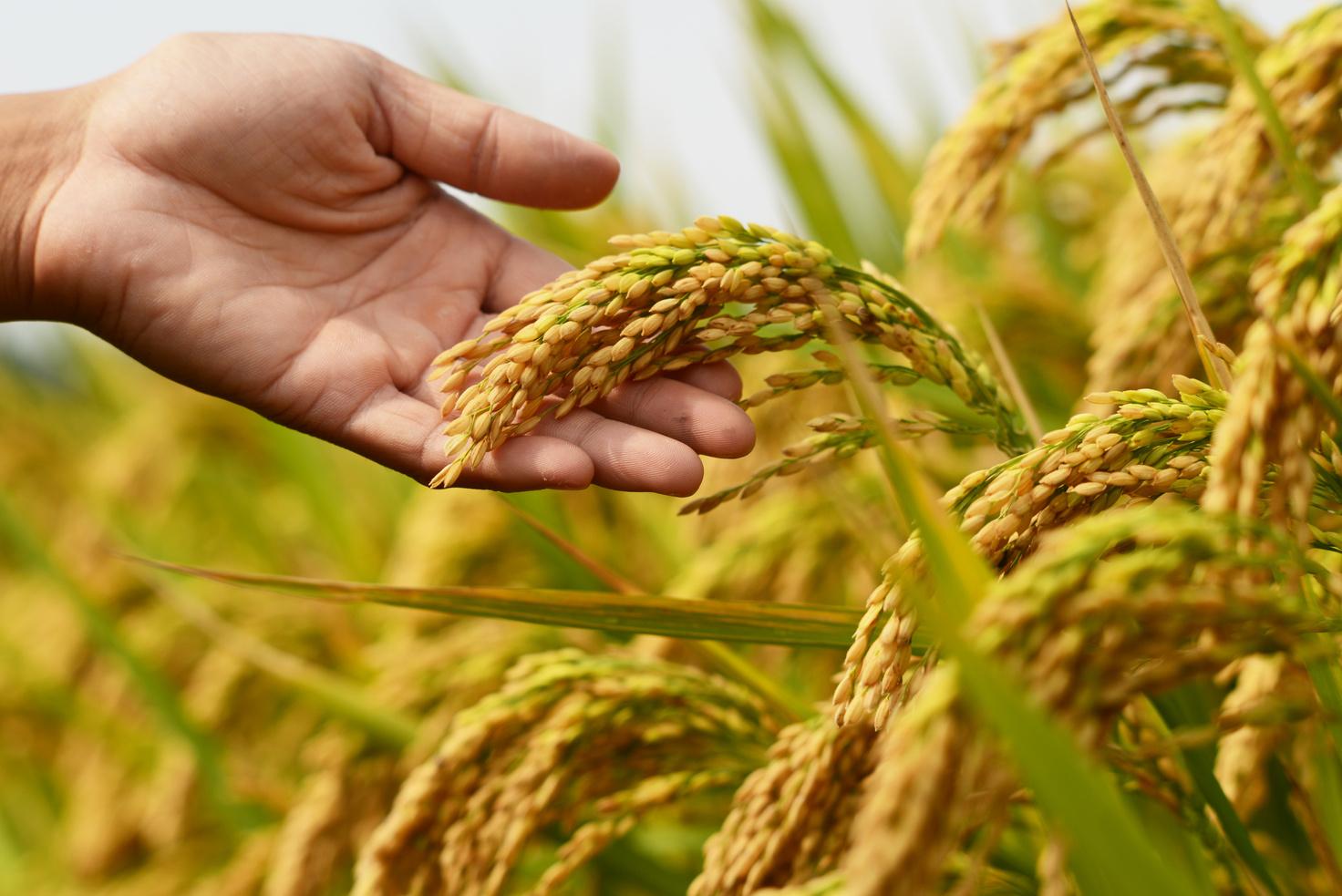
For drought management, agritech solutions such as moisture sensors and soil moisture monitoring systems help farmers gauge soil moisture levels accurately. Additionally, drought-tolerant crop varieties developed through biotechnology offer resilience against prolonged dry spells. Agritech-supported weather forecasting aids in predicting heavy rainfall, helping farmers make informed decisions about crop management and harvesting.
Embracingagritechsolutionsisanothersteptowards bravingthestormsofclimatechangeandturning Indiaintoasustainable,flourishing,andprosperous farminghub.





